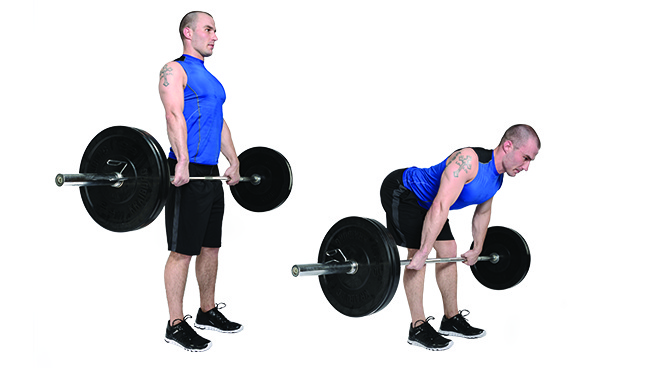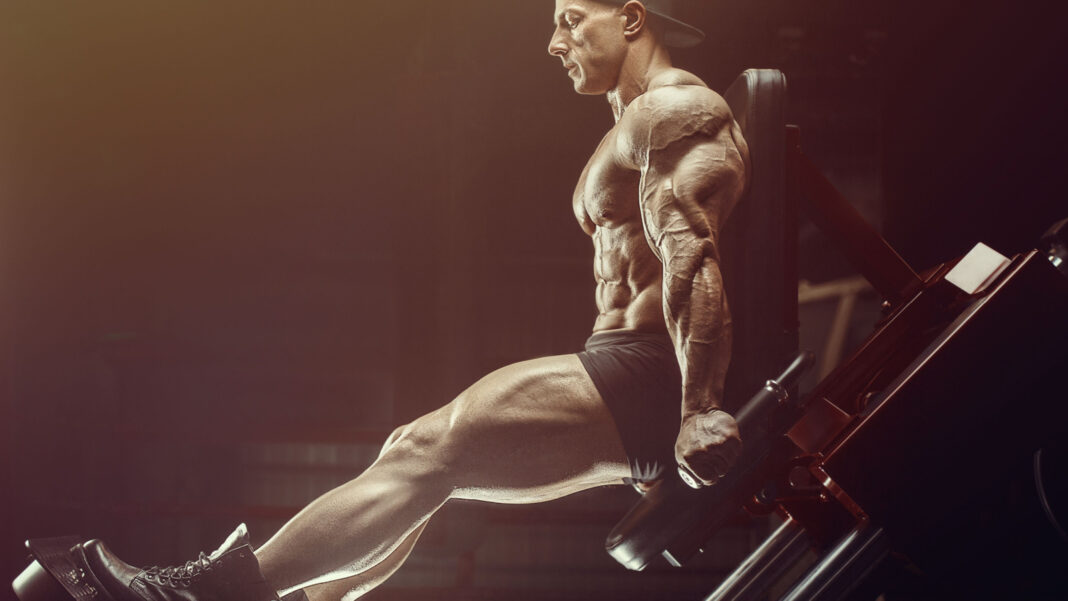Romanian Deadlift: Form, Muscles Worked, and Pro Tips from a Bodybuilder
If you’re serious about building a strong, powerful, and aesthetically balanced physique, the Romanian Deadlift (RDL) should be a staple in your training program.
Whether you’re a beginner learning the ropes or an advanced lifter fine-tuning your posterior chain, the RDL delivers unmatched benefits in strength, hypertrophy, and injury resilience.
As a bodybuilder, I’ve used the RDL for over a decade to sculpt dense hamstrings, a thick glute shelf, and a bulletproof lower back.
This article breaks down everything you need to know about the Romanian Deadlift—from muscles worked and correct form, to common mistakes and practical takeaways to maximize your gains.
Muscles Worked in the Romanian Deadlift
Unlike the conventional deadlift, which is more of a total-body movement, the RDL places greater emphasis on the posterior chain, especially the hamstrings and glutes.
Here’s a breakdown of the primary muscles worked:
Primary Movers:
- Hamstrings (Biceps femoris, Semitendinosus, Semimembranosus): These are the stars of the RDL. The eccentric (lowering) phase places deep tension on the hamstrings, stimulating growth and improving flexibility.
- Gluteus Maximus: Your glutes kick in strongly at the top of the lift during hip extension. This makes the RDL one of the best mass builders for glutes after hip thrusts and squats.
Secondary Muscles:
- Erector Spinae (Lower back): Acts isometrically to maintain a neutral spine. Over time, this builds lower back endurance and strength.
- Adductors: Assist in stabilizing the legs and supporting hip hinge mechanics.
- Forearms and Grip Muscles: Since you’re holding the bar throughout the movement, your grip strength gets a serious boost.
- Core: Your abdominals and obliques stabilize your torso and protect your spine.
What Is the Correct Form for a Romanian Deadlift?
Getting the form right is crucial—not just for maximizing results, but also for staying injury-free. The Romanian Deadlift is a hip hinge movement, not a squat, and that distinction makes all the difference.
Here’s a step-by-step guide to perfect RDL form:
Setup:
Bar Position: Start with the barbell in a rack or on the floor. Grip it with hands shoulder-width apart. You can use a double overhand, mixed grip, or straps if grip is limiting.
Foot Position: Stand with feet hip-width apart, toes pointed slightly outward.
Posture: Stand tall with a proud chest, slight arch in the lower back, and soft knees (not locked).
Execution:
Lowering Phase (Eccentric):
Initiate the movement by pushing your hips back—not by bending your knees.
Keep the barbell close to your body, sliding down your thighs as you hinge.
Lower the bar until you feel a deep stretch in the hamstrings. This is usually when the bar reaches just below the knees or mid-shin (depending on mobility).
Keep your spine neutral, eyes fixed on a point ahead (not up or down).
Lifting Phase (Concentric):
Reverse the movement by driving your hips forward.
Squeeze your glutes hard at the top.
Do not hyperextend the back or lean backward at lockout.
Key Cues:
- “Push the hips back like you’re closing a car door with your butt.”
- “Keep your chest proud and spine long.”
- “Feel the stretch, don’t chase the floor.”
Common Mistakes to Avoid in the Romanian Deadlift
Even experienced lifters can fall into bad habits, especially as fatigue sets in or ego leads to loading the bar too heavy. Here are the most common RDL mistakes—and how to fix them:
Turning It Into a Squat
If your knees bend excessively and your torso stays too upright, you’re squatting, not hinging. This shifts the focus away from the hamstrings and glutes and onto the quads.
Fix: Practice the hip hinge with a dowel or broomstick to groove the movement pattern.
Rounding the Lower Back
A rounded spine puts stress on the discs and takes the load off the target muscles.
Fix: Maintain a neutral spine throughout. Record yourself from the side to check your posture.
Going Too Low
Some lifters try to touch the floor on every rep, compromising form and putting stress on the lower back.
Fix: Only lower the bar to the point where your hamstrings are stretched and your back stays flat. For most people, that’s mid-shin.
Letting the Bar Drift Away
If the bar swings forward, it increases shear force on the spine and reduces hamstring engagement.
Fix: Keep the bar close—graze your legs on the way down and up.
Overextending at the Top
Leaning back at lockout places unnecessary stress on the lumbar spine.
Fix: Finish tall with your hips under your shoulders, glutes engaged, and abs tight.
Programming Tips for All Levels
Beginners:
- Start light, even with just a barbell or dumbbells, and master the hinge pattern.
- Perform 3 sets of 8–10 reps, focusing on tempo and tension.
- Use a mirror or video for form checks.
Intermediate Lifters:
- Incorporate RDLs on leg day or posterior chain day after squats or heavy deadlifts.
- Go heavier—4 sets of 6–8 reps with moderate rest (90–120 seconds).
- Use progressive overload, adding small amounts of weight weekly.
Advanced Lifters / Bodybuilders:
- Use RDLs as a hypertrophy anchor. Alternate between barbell, dumbbell, and trap bar variations.
- Incorporate intensity techniques: slow eccentrics (3–4 seconds), pauses at the bottom, or rest-pause sets.
- Pair with leg curls or hip thrusts for complete posterior development.
Practical Takeaways for Lifters
Master the Hip Hinge First: The RDL demands precision. Practice with bodyweight or light dumbbells before going heavy.
Use Video Feedback: Reviewing your form from a side angle is a game changer.
RDLs Build More Than Muscle: You’ll get stronger hamstrings, better posture, and improved deadlift and squat numbers.
Straps Are Fine: When going heavy, use lifting straps to focus on posterior chain work without being limited by grip.
Vary Your Tools: Dumbbell RDLs allow a deeper range of motion. Barbell RDLs are better for overload. Use both.
Train Both Ends: Pair RDLs (lengthened overload) with exercises like seated leg curls (shortened overload) for complete hamstring hypertrophy.
RDL Variations Worth Trying
- Dumbbell Romanian Deadlifts: Easier on the wrists and allows for greater control.
- Single-Leg RDLs: Great for unilateral strength, balance, and glute activation.
- Deficit RDLs: Standing on a small platform increases the stretch.
- Banded RDLs: Attaching bands adds resistance at the top for glute emphasis.
Final Thoughts from the Trenches
As a bodybuilder, I can confidently say that the Romanian Deadlift is one of the most underappreciated tools for building a world-class lower body. It demands control, patience, and good mechanics—but it pays off in thick hamstrings, round glutes, and a more resilient lower back.
If you’re not doing RDLs, you’re leaving serious gains on the table. Whether your goal is aesthetics, performance, or injury prevention, mastering the RDL will elevate every aspect of your training.
Remember: The goal isn’t just to move weight, but to build muscle. Control the movement. Feel the stretch. Own every rep.





